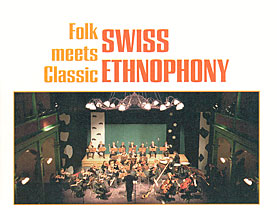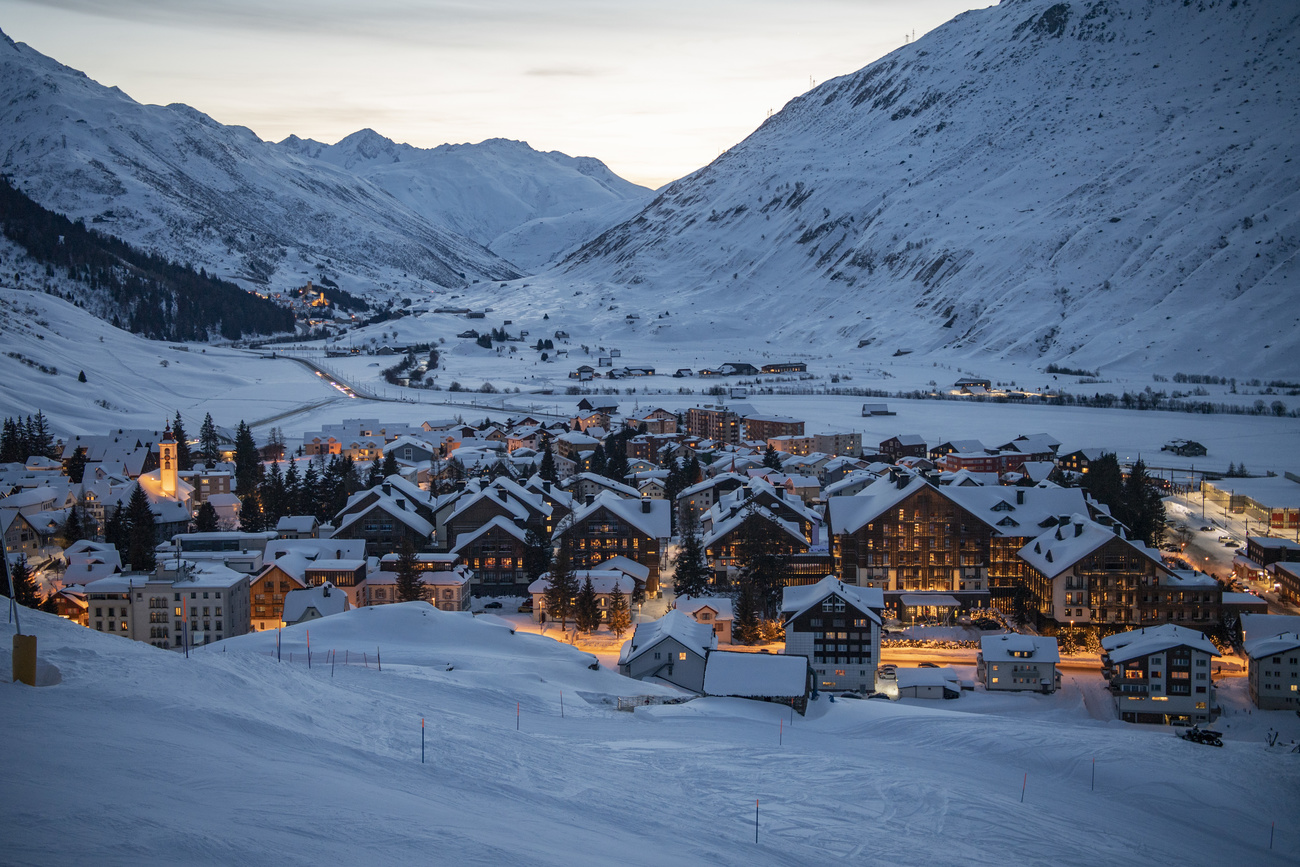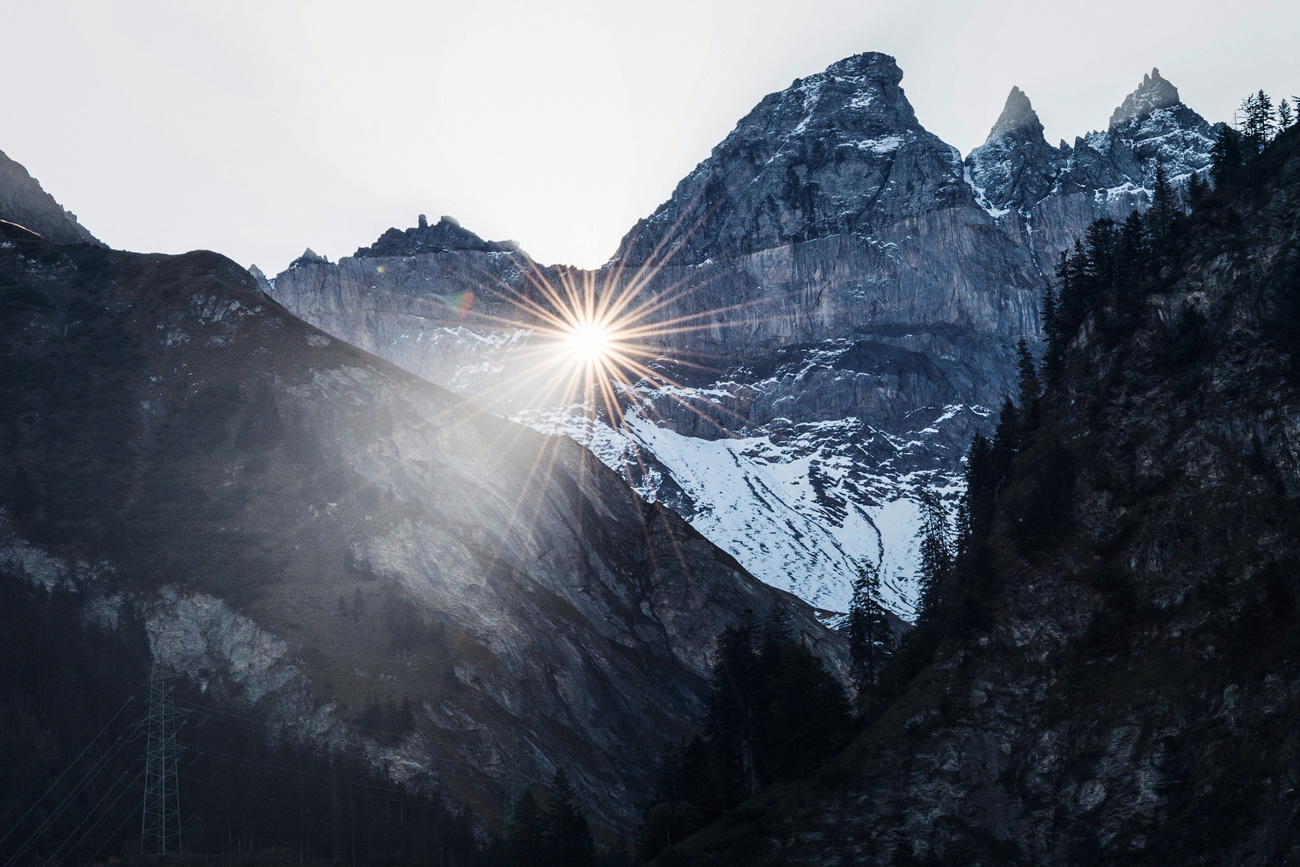Swiss Ethnophony – Folk meets Classic

"Ethnophony" presents four works that integrate elements of Swiss folk music into a classical context.
The young and highly motivated Swiss Chamber Philharmonic along with its enthusiastic counductor Patrice Ulrich and open minded folk soloists deliver a convincing result.
Paul Huber (1918-2001) – Concerto for Hammered Dulcimer and String Orchestra
Huber was born 1918 in Kirchberg, eastern Switzerland, to a farming family. He studied music at the Zurich Conservatory. He eventually completed his studies in composition with Nadia Boulanger in Paris.
During his career he stayed active as an organist and music teacher in eastern Switzerland (Wil, St. Gall). His composition “Frau Musika”, commissioned by the “Eidgenössische Musikfest”, won him overnight nationwide fame.
As a composer Huber chose to write mostly sacral works mainly in the late romantic genre. On the Concerto for Hammered Dulcimer and String Orchestra (composed 1994) he particularly intended to free the dulcimer from its usual folk background. He successfully attempted to restore the dulcimer’s role and elegance it stood for at the court or in private noble circles.
Dulcimer soloist on this recording Benno Bernet also premiered on this work on 11 September 1994.
Rolf Liebermann (1910-1999) – Suite on Six Folk Swiss Songs
Rolf Liebermann was born in Zurich and died in Paris. During his entire life Liebermann was known as a brillant, innovative and courageos composer, conductor, director author and producer. A kind of universal genius.
He was a former student of Hermann Scherchen and Vladimir Vogel. As a director he later held “pole positions” in radios (Swiss National Radio Beromünster, North German Radio Hamburg), and opera houses (the Hamburg State Opera, United Operas of Paris). Thereby he successfully promoted contemporary music with countless world premieres.
Composed 1944 the “Suite on Six Folk Swiss Songs” reflects an era of awakened patriotism in Swiss art caused by the political instability in war-torn Europe. The lightness of how Liebermann arranged these well-known melodies mirrors the direct influence Busoni’s “new classicism” had on him. In the following year Stokowski premiered successfully on this suite in New York.
Liebermann dedicated this piece to Paul Burkhard a pioneer interweaving classical music with Swiss themes.
Jean Daetwyler (1907-1994) – Concerto no. 1 for Alphorn and Orchestra
Daetwyler grew up in French-speaking Switzerland. At the Paris Conservatory he studied composition and conducting. In 1938 he moved back to Sierre, where, during the following 40 years, he left an indeliable mark on the town’s cultural life.
Famed for his works in his home region, he even enjoyed an international reputation as the “prototype of a Swiss composer with strong ties to the world of the alps”.
1947 proved to become a crucial year for Daetwyler as he happened to experience a virtuoso demonstration of hornist Jozsef Molnar on a alphorn. It inspired him for his concerto no. 1 for alphorn and orchestra. Another thirteen works for alphorn in any classical instrumental constellations would consequently follow this concerto.
The concerto depicts musically the lonely sheperd’s life in the alpine surroundings. It’s both a somber and bright stream of music. The concerto no. 1 for alphorn and orchestra was first performed 1972 in Paris under Daetwyler and alphornist Molnar.
Melchior Ulrich (born 1945) – Ethnophony for Ländler Ensemble and Orchestra
Following studies in Zurich, Salzburg and Lucerne, Melchior Ulrich returned to his native Schwyz, where he founded the Music School of Schwyz.
His works include choral works, chamber music, symphonic poems, ballets and operatic music. Many of his works are regularly performed outside Switzerland.
The musical connection of two stylistically independent ensembles was the creative challenge behind the “Ethnophony for Ländler Ensemble and Orchestra”. Taking an old Swiss folk dance suite, the “Chuchi-Rast”, as his starting point, Ulrich created a formal structure within which the symphony orchestra and the ländler ensemble could move freely.
The alpine custom of the “Rästli”-Dance, popular throughout the Alps until the middle of the 20th century, had a number of rules. Every dancer had to pay 20 to 50 Rappen (cents) per “Rast” (3 dance pieces). The cooking staff was only allowed to dance along during the last round (Küchen-Rästli), which was longer than the others and extended to 4-6 dances. Usually the audience could request an encore (the “Stümpeli”). After all, it could be months until the next dance…
Swiss Chamber Philharmonic
The Swiss Chamber Philharmonic founded 1994, is made up of professional musicians from all parts of Switzerland.
The orchestra’s programms are chosen with a view to presenting new works in a way that will make them attractive and palatable for a wide audience.
But on the other hand, regarding more conventional music, the orchestra puts emphasize on performances of unknown works or of compositions that have fallen into neglect.
Patrice Ulrich, conductor
Since 1994 Ulrich has been the artistic director of the Swiss Chamber Philharmonic.
Patrice Ulrich studied conducting and piano at the conservatories of Lucerne and Zurich. Even as a student he put his focus on questions of musical interpretation by taking courses, for example at the University of Mainz with Sergiu Celibidache.
Benno Bernet, hammered dulcimer (Appenzeller Hackbrett)
Benno Bernet from eastern Switzerland is practically a self-taught dulcimer player. He premiered on Hubers concerto. Besides folk music his various musical interests led him to study jazz at the Jazzschule St. Gallen.
Martin Roos, alphorn
Versatile free-lance musician Martin Roos is primarily art home with the horn. He studied this instrument in Paris with Francesco Raselli and Jacques Adnet and at the Lucerne Conservatory. Further studies in natural horn followed at the Schola Cantorum Basiliensis.
Since 1991 Roos has begun to appear regularly on the alphorn.
Ländlerkapelle
The ad-hoc Ländlerkapelle on the “Ethnophony” recording is made up of Petra Theiler-Fölmi, Friedrich Herger (Swiss accordions); Josef Heinzer, clarinet and Hans Theiler (double bass)
Production information
Swiss Ethnophony – Folk meets Classic (1998). MH CD 103.2. Programme produced by Patrick Linder for SRI.









You can find an overview of ongoing debates with our journalists here . Please join us!
If you want to start a conversation about a topic raised in this article or want to report factual errors, email us at english@swissinfo.ch.